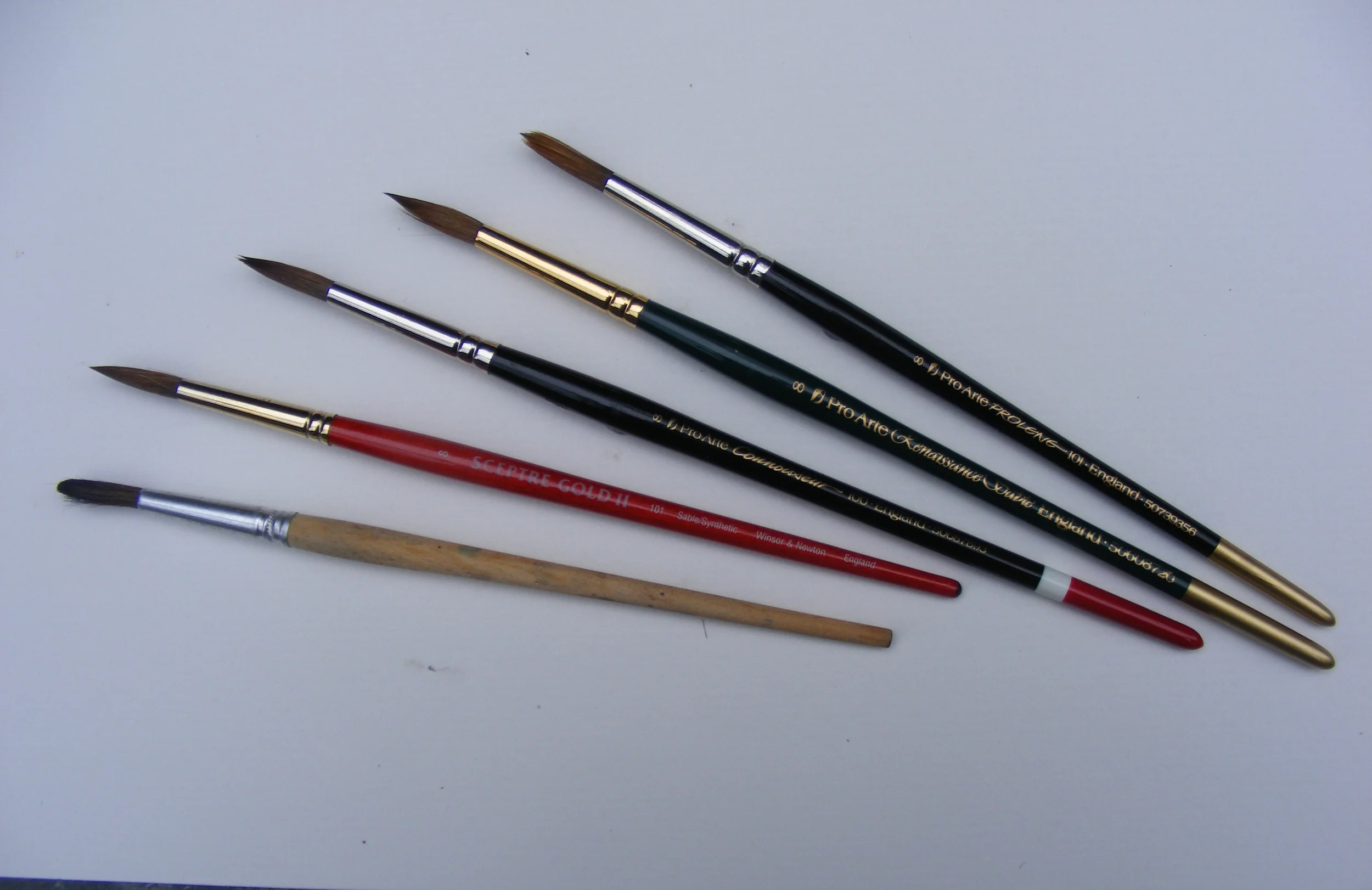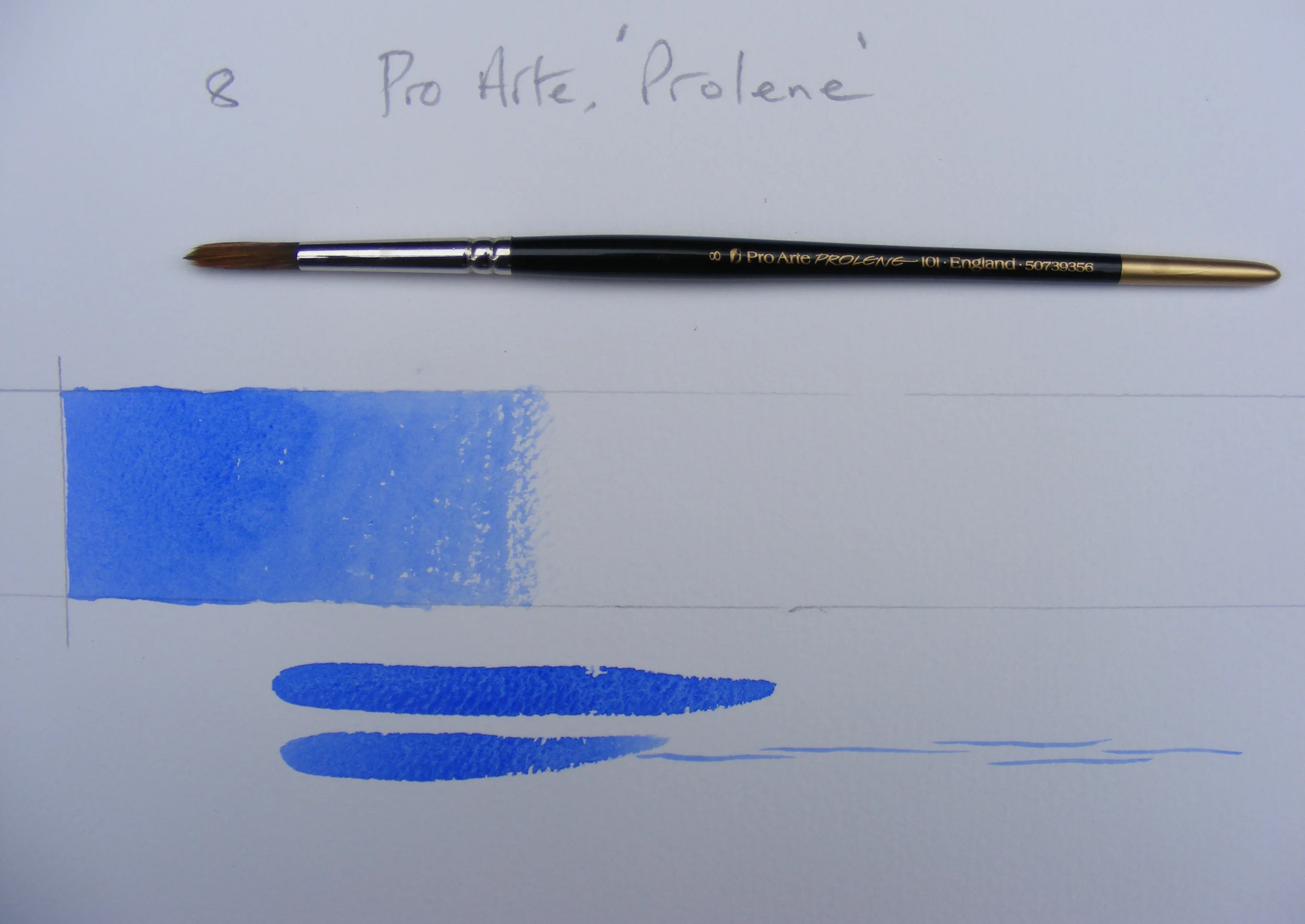Colour clearly matters hugely to most visual artists, in fact you could neatly describe most paintings as carefully (or not so carefully) orchestrated patches of colour on canvas or paper, and leave it at that.
Read moreLesson 3 - The Paper You Paint On and How Watercolour Works
To make an informed judgement about which paper(s) to use, it is hugely helpful to know how watercolours work and what makes them so different from other mediums like gouache, acrylic and oils.
Read moreLesson 2 - Watercolour brush reviews and why you can’t tell a brush by looking at its handle
Most artists that paint take at least a cursory interest the brushes that they use. This is because to a certain extent the brush will dictate the kind of marks that you can make, in the same way that say a biro or an old fashioned dip pen have their own characteristic kinds of marks. Also, it will be your point of contact with the paper and it needs to feel right and do its job well.
There are some famous and notable exceptions though. Jackson Pollock, for part of his career, dripped, drizzled and poured car paint onto his canvases and clearly took a delight in abandoning his brushes altogether and more recently the German abstract artist Gerhard Richter found a whole new vocabulary of marks when he invented a gizmo that was something between a squeegee-mop and a yard long steel rule which he used to spread his paint with. However, I think it’s worth considering in detail what is needed from a watercolour brush, before leaping to the conclusion that you might be better off without one!
Watercolour painting has a long tradition in Britain and makers and manufacturers have tried for years to come up with perfect brushes. Generally the brushes are round, rather than the flat brushes used by oil-painters and they are constructed so that the hairs at the tip come to a sharp point. This is so that it is possible to paint smaller details without changing your brush, which saves time and a lot of faffing. The best brushes are constructed so that they can lift and carry a lot of paint from the palette to the paper which obviously means you can do more painting and cover a greater area before you have to collect more paint so you can spend more time painting and less time fetching and carrying.
Manufacturers are in the business of making money and spend a deal of time designing brushes that look great, with beautiful long painted handles, brass ferrules, and gold embossed script. However although this can be quite tantalising it has bugger all to do with how well the brush will work.
A very simple test that you can apply yourself is to give the brush the ‘Eveready Bunny’ test. Load it up with as much paint as it can carry (using a very wet mix) and make a long even wash of paint down the sloping paper between lines about an inch and a half wide until the brush runs dry. The distance you can cover before running out of paint is a very good measure of the carrying capacity of the brush, it is also worth seeing how thin you can paint a line with the point, this will tell you how well the brush will handle detail.
I have tested a handful of size 8 brushes that I’ve acquired over the years and I think there are some pretty useful lessons in the results.
The Pro Arte ‘Prolene’ brush is very reasonably priced but you can see it covers only relatively little ground, it does however come to a good point.
The Pro Arte ‘Renaissance Sable’ cost heaps (about £27) but you can see clearly that it carries almost twice as much paint, however it’s a brand new brush and does not have a pin sharp tip.
The Pro Arte ‘connoisseur’ actually carries just as well as the pure sable but costs nowhere near as much and it comes to a very sharp point even though I’ve used it for quite a few months
The Sceptre Gold 11-101 sable/ synthetic costs less than pure sable, is obviously a mix of synthetic and natural hairs and yet carries more paint and comes to a good point.
The big surprise is that the unnamed brush that my wife found on eBay for a couple of quid beat all the others hands down. All I know about these brushes is that they were hand made in Ireland 30 odd years ago and the guy who sold them had a dozen or so in his attic. I don’t know what the hairs are, they could be sable or squirrel or something else. It was a very lucky find, but the point is that what matters is how well the brush works, not how lovely the handle is!
So what can be learned from these tests? The most obvious conclusion is that natural hairs out-perform synthetic ones, although a brush with a mix of synthetic and Sable can be just as good and a lot less expensive. However if you only ever paint small paintings, say about A5 or smaller, using a synthetic brush wont cramp your style because you won’t need your brush to carry very much paint. If you make large paintings (A4 up to whole sheet) I would suggest that having natural or mixed hairs in the brush would make your painting a lot easier.
If you have a look at my originals on the website you will see that most of my work is quite large. I frequently cut my watercolour sheets into thirds, which gives a paper size 10 X 22 inches. Almost all of the painting is carried out with a size 8 brush, although I will pick up a 12 for big sloshy skies and I use a tiny brush which I keep just for my people and boats because I have more control than using the tip (however sharp) of a bigger brush.
Lesson 3 will be all about paper – also pretty damn important. Cheers for now.
Lesson 1 - Why Palettes Matter and Tubes are Best
Surprisingly, many books on watercolour technique almost completely ignore the question of what you should mix your colours in, leaving the beginner to struggle on, using the lid of their first box of paints or ‘upgrading’ to a white dinner plate.
Read more





